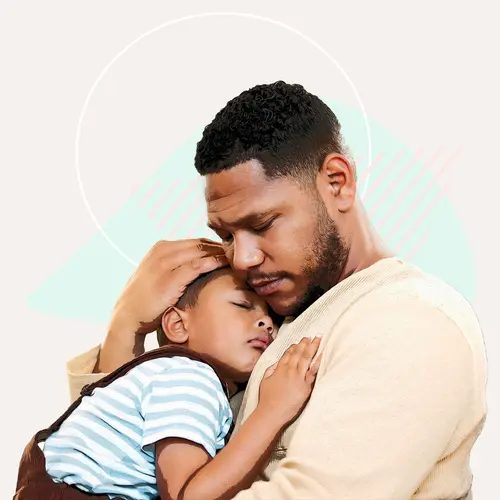Kids' moods can change in a flash -- she's happy, then bored; cranky, then sweet.
What's up with that, and how can you help her learn to manage her moods in healthy ways so she makes healthy choices?
No matter what your child is feeling, your first job is a parent is to empathize. "Let your child know that you care what they are feeling and you have a sense of what they are feeling," says Carl Pickhardt, PhD, a psychologist in Austin, Texas, and the author of Surviving Your Child's Adolescence.
When something is bothering your child, it's natural to want to fix it. Though it can be tempting to try to soothe sadness with ice cream or cookies or distract them from anger with TV or a video game, resist that urge. Junk food and screen time don’t take the edge off of feelings and can cause unhealthy weight gain.
Unless your child is experiencing a true crisis, it's usually better to let her figure out her own solution to challenges.
It's about helping your child learn a key skill: How to bring herself back up when she's feeling down, says Pickhardt. And teaching her how to do that it in healthy ways.
Tell your child that everybody gets sad or mad or upset sometimes, but you don't have to stay that way for long or turn to unhealthy behaviors like eating junk food or vegging out on video games to feel better. Let them know this, says Pickhardt: "You have what it takes to be happy. Let's talk about some ways that can happen."
Sadness. This is a normal emotion we all feel from time to time. As the parent, it's important to acknowledge that and to find out what's making your child sad, says Los Angeles psychologist Lisa Firestone, PhD.
"We don’t have to solve the problem, whatever it is, right away or make their sadness go away," she says. "The skill we want our children to develop is to be able to identify their feelings and to be able to tolerate feeling them."
That means helping your child put names to his feelings. "When Joey wouldn't play with you at lunch, I bet you were sad," for example.
"If we can name a feeling, we can tame it," Firestone says.
Teach your child that sometimes when people feel sad it may make them want to eat unhealthy foods. Explain that when they are done identifying their feelings, they can make healthy choices to feel better. Then work together to find something that will make your child feel better.
Suggest doing something active, like taking a nature walk together or dancing to music in the living room. Explain that getting moving will help you both feel better. When you lead the way, kids are likely to follow your example.
Anger. Find out why your child is mad and then ask what would make him feel better. If someone took his toy, for example, tell him it's not OK to snatch it back, but it is OK to ask for it to be returned.
Don't tell him he shouldn't be mad. It's not about suppressing anger, it's about managing it. "When we are allowed to feel our anger directly, we can let it go," Firestone says.
After you've talked, help your child calm down by taking a walk to get rid of angry feelings. Exercise triggers the "feel-good" hormones in the brain that should help him feel better. Let him know that. Or have him listen to some soothing music to help him chill. Teach him that these are healthy ways to relax.
Disappointment. There will be times when your child is upset with the way things work out. It helps if early on she learns how to take care of herself when she doesn't get what she wants.
"We can acknowledge their feelings and, at the same time, encourage them to keep on going for the things they want in life," Firestone says. "We want them to learn they can be disappointed and hurt, but that they don’t have to give up or protect themselves by acting like they don’t care."
When your child is bummed, remind her that by moving her body she can feel better.
Boredom. Kids are often used to parents entertaining them. When they don't have something to do, they look for someone else to give them plans. It's better if you give your child the skills to amuse himself.
Ask him to come up with some ideas that sound fun, apart from TV and video games. Ask, "Can you think of ways you can move your body?" Exercise -- like riding bikes, shooting hoops, or exploring the yard or a nearby park -- burns energy and can be even more fun.
Hunger. First find out if your child really is hungry. Sometimes we want to eat when we're just bored. Explain this to her. If she’s not really hungry, suggest your child think of a fun activity -- and offer to do it with her.
If she's truly hungry, head to the kitchen. Make a tasty, healthy snack together, like a fruit smoothie or an apple with 2 tablespoons of almond butter.


